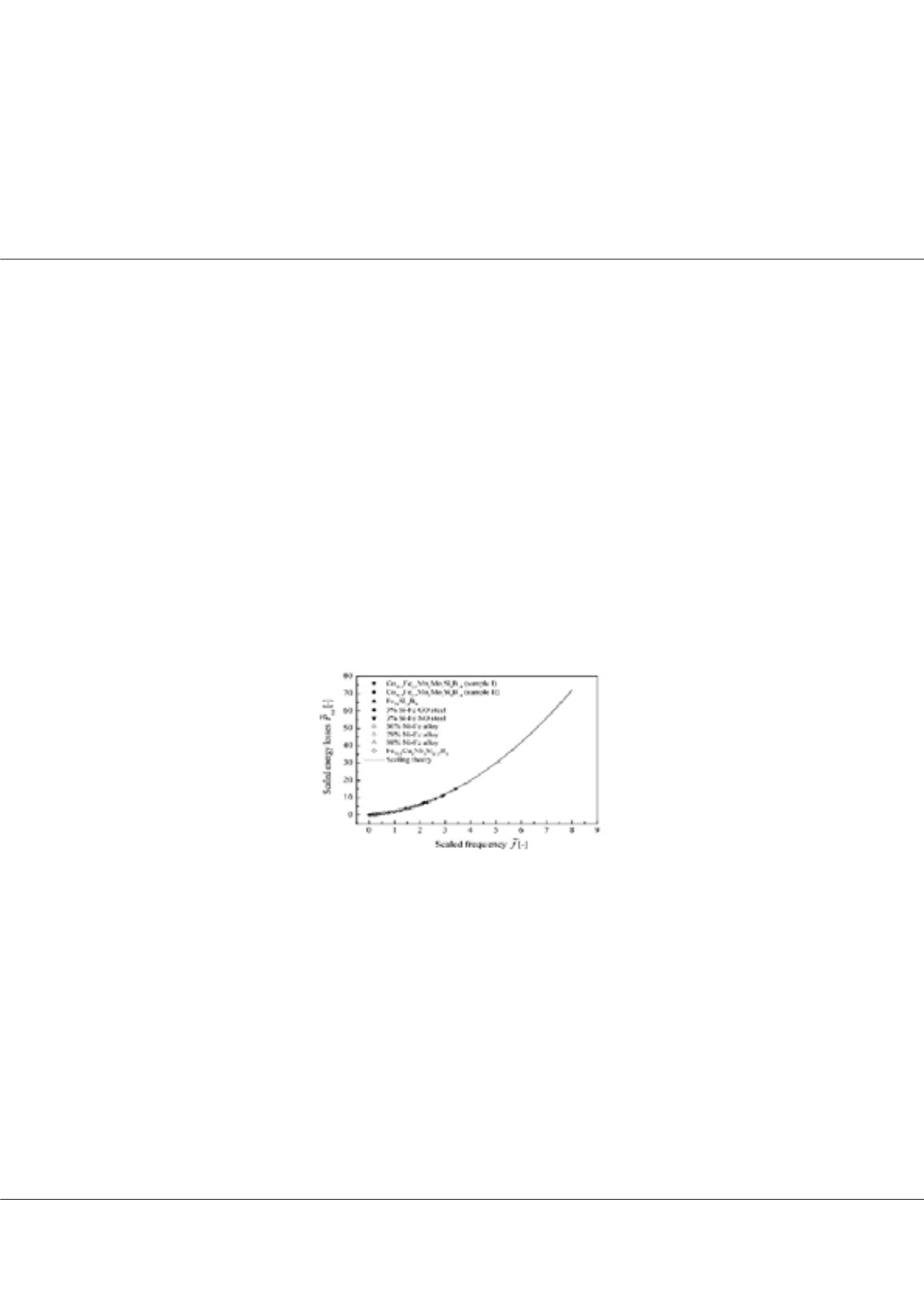

Page 54
Notes:
conferenceseries
.com
RRJOMS | Volume 5 | Issue 4 | July, 2017
July 27-29, 2017 Vancouver, Canada
10
th
International Conference on
Emerging Materials and Nanotechnology
Scaling a way for revealing self-similar features of materials and new applications
Krzysztof Z Sokalski
Czestochowa University of Technology, Poland
C
ertain features of certain materials are self-similar. This phenomenon is recognizable by scaling of measurement data
corresponding to the considered self-similar feature. To perform scaling, we apply notion of homogenous function in
general sense. For two independent variables such a function reads P(f,B)=B
β
F(f/B
α
), where P is a considered magnitude, α and
β are scaling exponents, F(∙) is an arbitrary continuous function, where α, β and F(∙) have to be determined by the measurement
data. Definition of P(f,B) enables us to transform all characteristics P(f,B) to the one universal function of the one variable:
P(f,B)/ B
β
=F(f/B
α
). This effect is so called the data collapse and can be applied for comparison of measurement, data measured
in different laboratories, which enable us to estimate quality of each laboratory series. Another application of the data collapse
is compression of large experimental data. If the considered data are produced by a self-similar system then one can store them
in a form of continuous curve. The data collapse enables us to introduce an absolute dimensionless characteristic:
P
=
f
• (
f
+1),
where
P
and
f
are dimensionless P and f, respectively. This characteristic divide {
P
,
f
} space into the two independent subspaces
of material’s characteristics. Finally, the scaling supplemented by pseudo-equation of states plays basic role in creation of
algorithms for designing of modern materials. The presented results are based on experimental data of soft magnetic materials
and soft magnetic composites. Where, P (f,B) is density of power loss, f is frequency of the field’s modulation and B is maximum
of magnetic induction. One can apply this simple mathematics to any self-similar object. However, ultimately one must say that
the degree of success achieved when applying the scaling depends on the property of the data. The data must obey the scaling.
Biography
Krzysztof Z Sokalski has a vast Research Experience (some events) from Dec. 1999 – Aug. 2016. He works as a Research Director at Czestochowa University of
Technology, Institute of Computer Sciences Czestochowa, Poland from Oct. 1994 to Sep. 2002. He served as Professor in Full at Jagiellonian University, Institute
of Physics, Cracow, Poland and Visiting Scientist of Integrability of Quantum Systems at Utrecht University, Institute for Theoretical Physics Utrecht, Netherlands.
From Jul. 1988 to Sep. 1988, he served a Visiting Scientist of Dynamical Critical Phenomena at University Utrecht, Institute for Theoretical Physics and from served
as Visiting Professor teaching Phase Transitions and Critical Phenomena for PhD students at the Rockefeller University, New York City, United States Laboratory
of Mathematical Physics. From Feb. 1988 to Oct. 1994, he worked as Professor (Associate), Head of Soft Condensed Matter Department, Jagiellonian University,
Institute of Physics, Krakow, Poland.
krzkos791@gmail.comKrzysztof Z Sokalski, Res. Rev. J Mat. Sci. 2017
DOI: 10.4172/2321-6212-C1-002
















